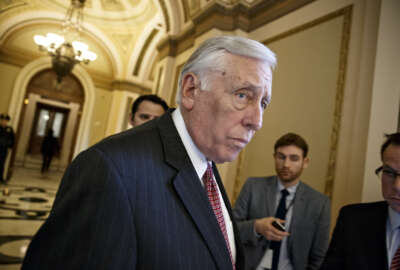
Cuts to EPA’s FY18 budget could trigger ‘major recession’ in environmental field
John O’Grady, president of AFGE Council 238, which specifically represents EPA employees, says cutting the agency's budget by one-third will impact federal,...
Empty offices, low morale, and that’s just the good news coming out of the proposed fiscal 2018 Environmental Protection Agency budget.
John O’Grady, president of the American Federation of Government Employees Council 238, which specifically represents EPA employees, said in an interview with Federal News Radio that the roughly 32 percent cut to the agency’s bottom line would mean deferred maintenance on critical environmental infrastructure, and the trigger of a “mini to major recession in the environmental field.”
“The White House budget proposal for FY2018 is devastating to the agency,” O’Grady said. “It’s going to ensure that the agency will not be able to protect human health and the environment. It’s also very devastating from a morale standpoint, to the dedicated civil servants who work at the U.S. EPA. As many people know, we’re already at a barebones budget and staff. We’ve gone from 18,000 employees to down to under 15,000. We’re struggling to get the work done. Now they’re proposing another 3,000-plus employees to leave the agency. I don’t see a way that this agency can continue to function.”
The proposed budget for 2018 is $5.7 billion, compared to the $8.1 billion 2017 enacted amount. The coming fiscal year proposes 11,611 FTEs, a reduction of about 3,800 positions from last year.
“The workforce at the U.S. EPA is probably one of the most dedicated,” O’Grady said. “People truly believe in the mission of protecting human health and the environment. One of the clear examples of how people really feel about this agency is even after they retire, they come out to rallies. They are extremely concerned about the agency’s budget and the agency’s ability to carry out the mission. They join to a large extent a community organization. They help out their communities to ensure that the environment is protected. That’s basically the mindset of people here.”
But even if the mindset of EPA’s workforce is one of community, one of the problems facing the agency is that the work exceeds the workforce, particularly at the state and local levels.
“Their environmental agencies are understaffed,” O’Grady said. “They’re excellent people, they do great work, they are our true partners in this work. However, if they’re already understaffed and under budget, and they’re cutting the U.S. EPA and the funding going to states, the net result is environmental protection will for the most part cease.”
This year’s budget proposes $2.7 billion in state and tribal assistance grants, compared to the $3.5 billion in fiscal 2017. O’Grady highlighted that without appropriate funding for drinking water and waste water management, the nation will see another Flint, Michigan-style water crisis on a much grander scale.
The president’s budget includes $983 million in savings from eliminating programs. It does, however, include $646 million for clean and safe water programs, compared to $978 million proposed in 2017.
Bare bones budget
Investing in public health programs is one thing lawmakers and the administration need to consider, but the agency also needs people in place to oversee and maintain those programs, as well as infrastructure.
Right now the EPA is setting aside $12 million to help cover early buyouts and early retirements triggered by President Donald Trump’s government reorganization. O’Grady said the problem is the maximum amount of money an employee can get from a voluntary early retirement is $25,000.
“People who are right at the point of retiring are going to say ‘hey, I’m going to wait a little bit for this buyout and get a $25,000 check on my way out anyway,'” O’Grady said. “It may encourage some to retire a bit early but $25,000 after taxes doesn’t go very far unless you’re really at the point of retiring.”
Voluntary incentive payouts are also capped out at $25,000, and the problem there, O’Grady said, is that there aren’t any environmental jobs at the state or local level, or in consulting firms, because those areas are also going to feel the budget pinch.
“There are not going to be jobs in the environmental field,” O’Grady said.
Copyright © 2025 Federal News Network. All rights reserved. This website is not intended for users located within the European Economic Area.
Related Stories





